So, what is 'The Sublime', exactly ?
Caspar David Friedrich at the Metropolitan Museum of Art, 2025
The passion caused by the great sublime in nature is Astonishment; and astonishment is that state of the soul in which all its motions are suspended with some degree of horror.
— Edmund Burke
Infinity, vastness, power, magnificence, and obscurity. These are the quintessential features of ‘the sublime’ as it was defined by the Romantic philosopher Edmund Burke in an essay entitled A Philosophical Enquiry into the Origin of Our Ideas of the Sublime and Beautiful, published in 1757.
Burke was by no means the first to come up with the idea of ‘the sublime’. The idea dates all the way back to the Romans (specifically, to a writer named Longinus), who believed that the sublime was a type of literature. In Roman terms, a speech or a poem was considered sublime when it talked about noble ideas, had vivid language, and, crucially, made its audience feel something.
Burke, however, was the first to apply the idea of the sublime to concepts outside of literature. He believed that the sublime could be found in nature. He also believed that the sublime was not a fundamentally good thing, but rather something much more ambiguous.
Burke’s sublime is terrible, awe-inspiring, and overwhelming. A vicious storm is sublime. A huge, rugged boulder is sublime. A crumbling ruin, filled with memories of the past, is sublime. A moonlit graveyard, teetering on the edge of the supernatural, is sublime.
And you know who loved the sublime? Caspar David Friedrich, whose work is currently on display at the Metropolitan Museum of Art in New York, until May 2025.
Friedrich is sometimes held up as the poster child for Romantic art. In fact, there is no Romantic painting more famous than his Wanderer Above the Sea of Fog (1817). It’s almost as viral as Alexandre Cabanel’s Fallen Angel (1845), which I wrote about recently — a painting which also has sublime, Romantic elements.
To briefly explain ‘Romanticism’: Romanticism was a movement in European art and literature which spanned the mid-eighteenth to early-nineteenth centuries. It is sometimes contrasted with earlier artistic movements, like Neoclassicism and the Enlightenment, which tended to prioritise ideals like harmony, balance, and order. Artists of the Romantic school were not remotely interested in these strict principles. Instead, they wanted to revive a more intuitive form of creation, and they were governed, principally, by feelings and emotion instead of rules. This is why the Romantics are so connected to nature, because they were looking for ways to free themselves from society and the man-made world.
The Romantics were also especially interested in Burke’s idea of the sublime because they wanted to make art which affected the spectator: art which could make you scream, or cry, or pray (or, like, lead a revolution). This was a group of artists who weren’t looking to create beautiful, pleasant, decorative works, but who were instead trying to imbue their work with spiritual power. Remember: ‘the beautiful’ is only surface level; ‘the sublime’, on the other hand, makes you stop and take a deep breath. In terms of artistic technique, a sublime painting might have beauty, certainly: but it won’t have only that. It will also make you feel wonder, elation, or trepidation.
You might, for instance, experience this if you see Friedrich’s paintings in person. It might not happen in front of every painting, but — as with the works of other Romantic painters like Philip de Loutherbourg and John Martin — there is definitely an expansive, inarticulable, mystical quality to Friedrich’s work, which gives you pause.
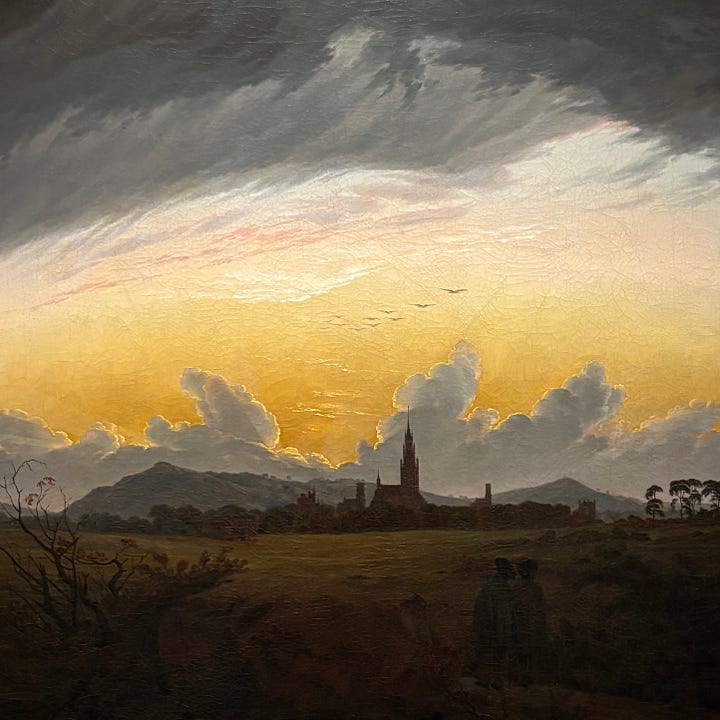
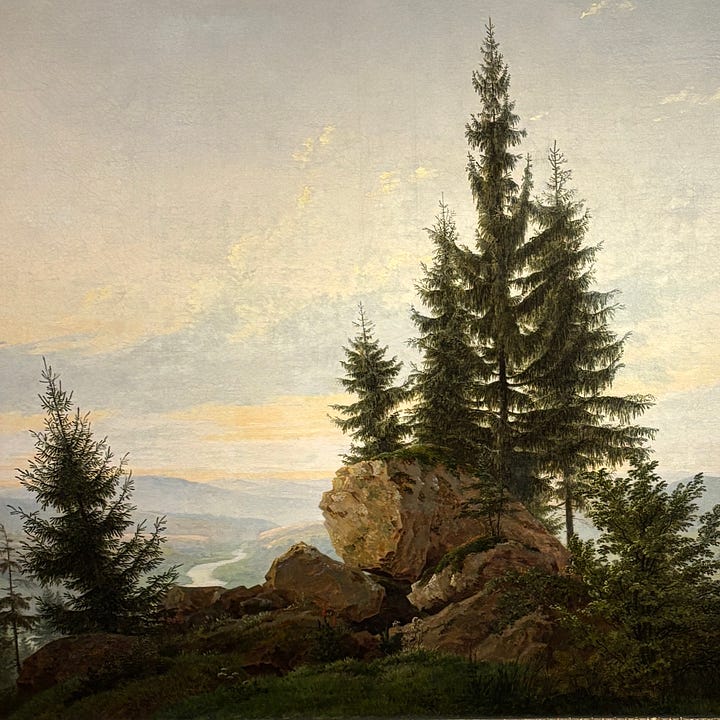
What differentiates Friedrich, though, is that his paintings are actually firmly grounded in real places. They are stylised and poetic, but they are not supernatural. They are informed by the vistas and terrains which Friedrich would have seen in the mountains surrounding Dresden and the Baltic coast, where he lived, hiked, and travelled. De Loutherbourg, Martin, even Henry Fuseli, and William Blake: these are Romantic artists of the imagination. Friedrich is an artist who finds wonder in the real world.
Friedrich’s lifetime obsession with landscape is a defining feature of this exhibition. With the exception of one self-portrait and a few emblematic prints, it’s a show which is primarily interested in Friedrich’s relationship with the natural world. But there is always something about these landscapes — some quality of framing, or pattern formation, or a hidden motif — which elevates them beyond the plane of nature, and which prompts us, the viewer, to meditate on some wider meaning.
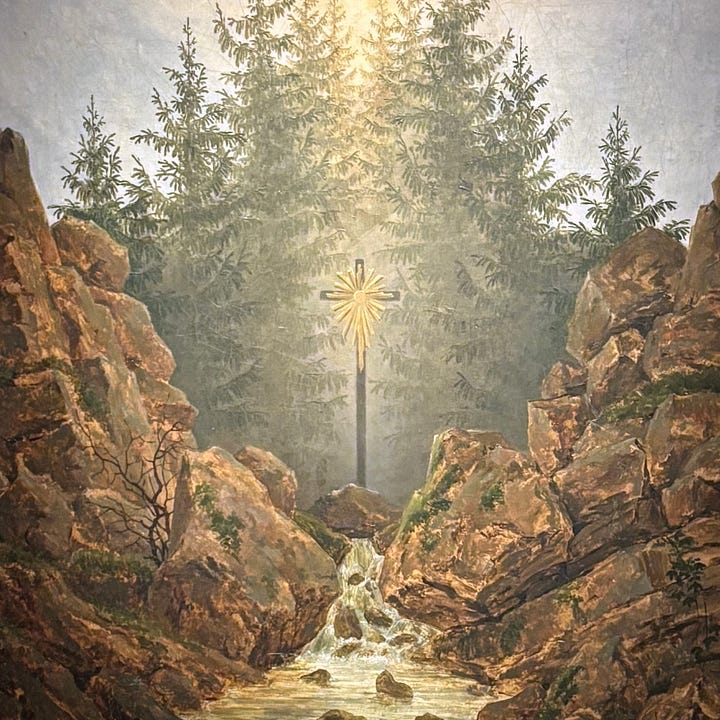
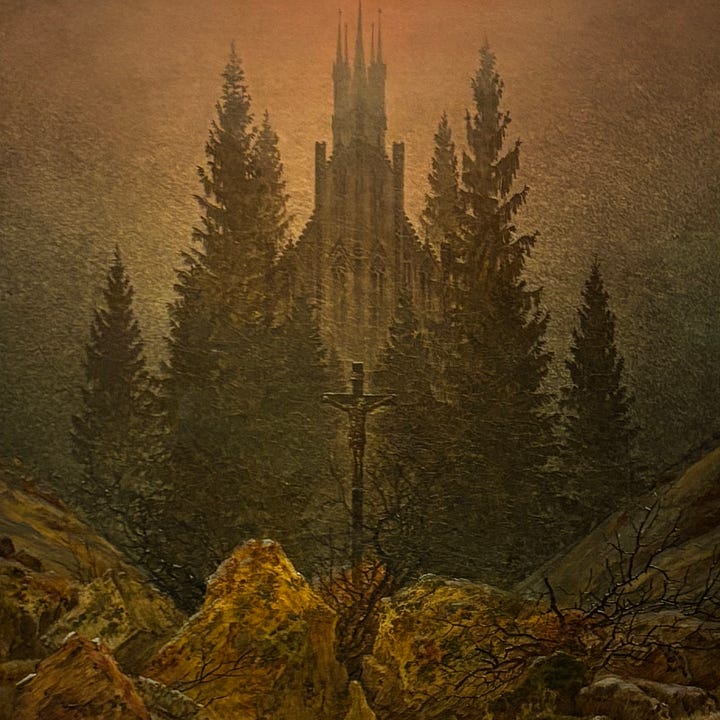
Some of this meaning is overtly Christian. Friedrich’s signature motif is that of a single crucifix, either illuminated in the midst of a Gothic woodland, or concealed, sneakily, on top of some misty peak. Since many of his works were painted around the time of the Napoleonic Wars (1803 to 1815), it is possible that Friedrich may have been gravitating towards conciliatory symbols of faith in response to this upheaval and violence in Europe.
And yet… though the crucifix motif gestures to Friedrich’s Protestant background, it also reveals his keenness to view nature as a site of sacred encounter. This is yet another Romantic idea, originating in the writings of the German philosophers Schelling and Hegel. It was considered, by some, to be sacrilegious.
In Ruins at Oybin, for example (which, by the way, is my favourite Friedrich painting), the abandoned, ruined church is eclipsed by the nourishing sunlight which streams through its windows. These windows make three elongated silhouettes: perhaps symbolic of the Holy Trinity, or Holy Family. Although the building has long since perished, the divine spirit lives on in the sky and dirt.
The task of a work of art is to recognise the spirit of nature, and with one’s whole heart and intention, to saturate oneself with it and absorb it and give it back again in the form of a picture.
— Caspar David Friedrich (1825-35)
Friedrich isn’t a strict landscapist. His landscapes are sometimes very minimalistic. Look at Monk by the Sea, where the vastness of the scene all but dwarfs its single occupant. The inclusion of this solitary figure transforms the painting into something beyond a traditional landscape. You’ll recognise a Friedrich instantly by this hallmark — his figures always face away from the viewer, gazing into the sea or sky. Typically dwarfed by the overwhelming presence of nature, these figures symbolise the insignificance of man.
There’s another important point here: these internal figures are looking at the painting just as we, the viewers, are simultaneously looking at them. It’s almost like we’re on their journey with them. They are inviting us to leap through the canvas and go on some adventurous journey into the wilderness.
Truly, I’ve never been to an exhibition where I’ve had so much fun taking pictures of people looking at pictures.
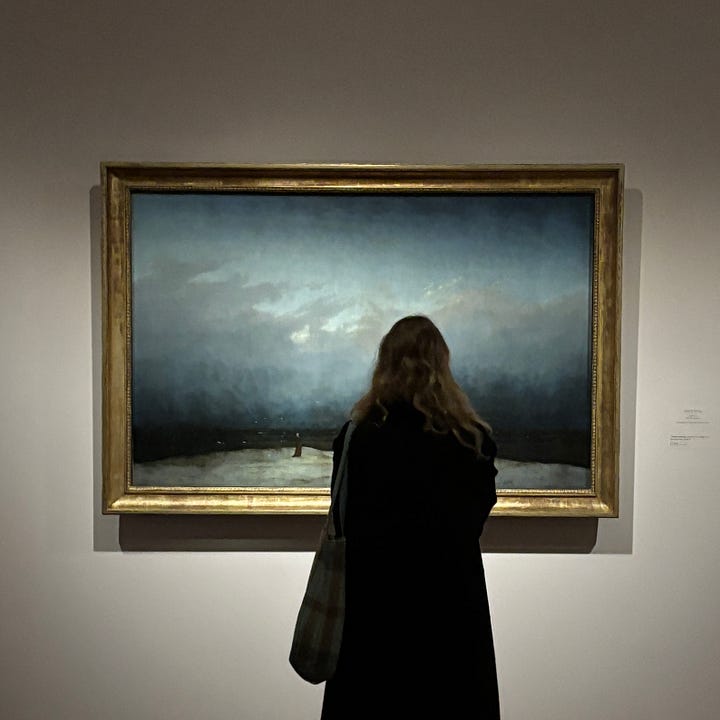
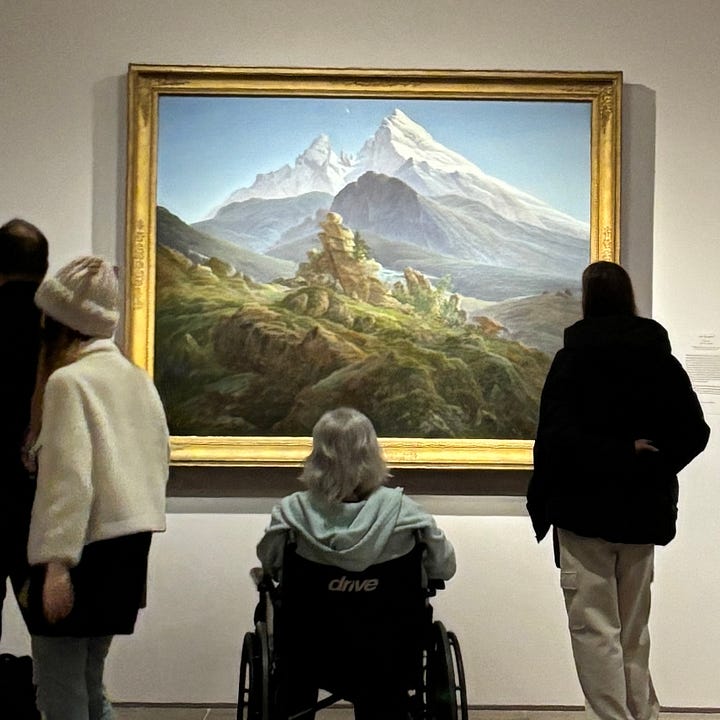
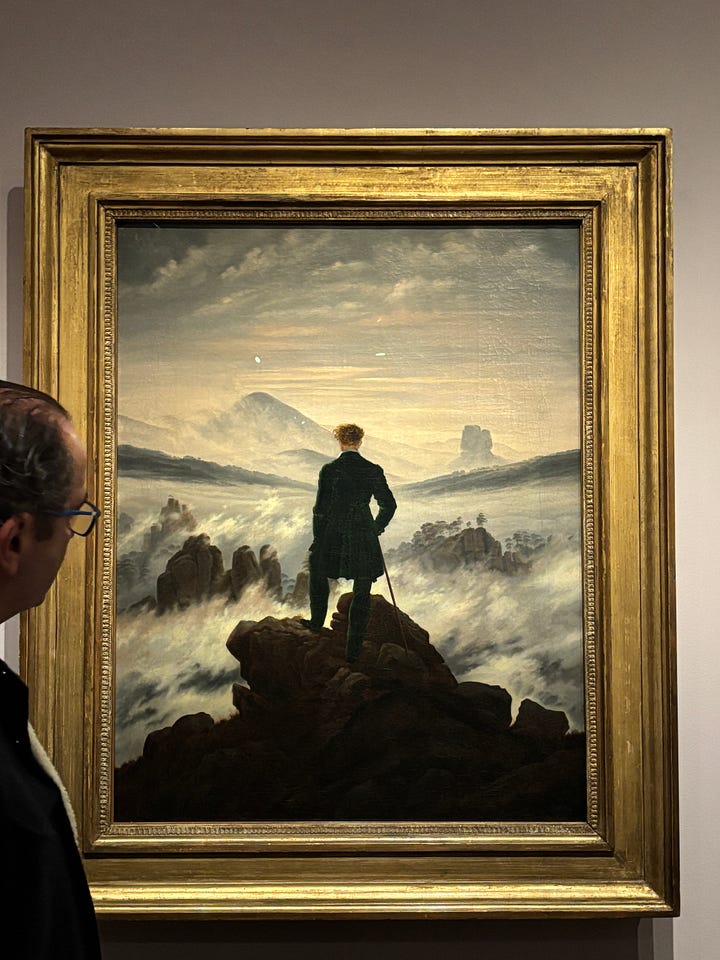
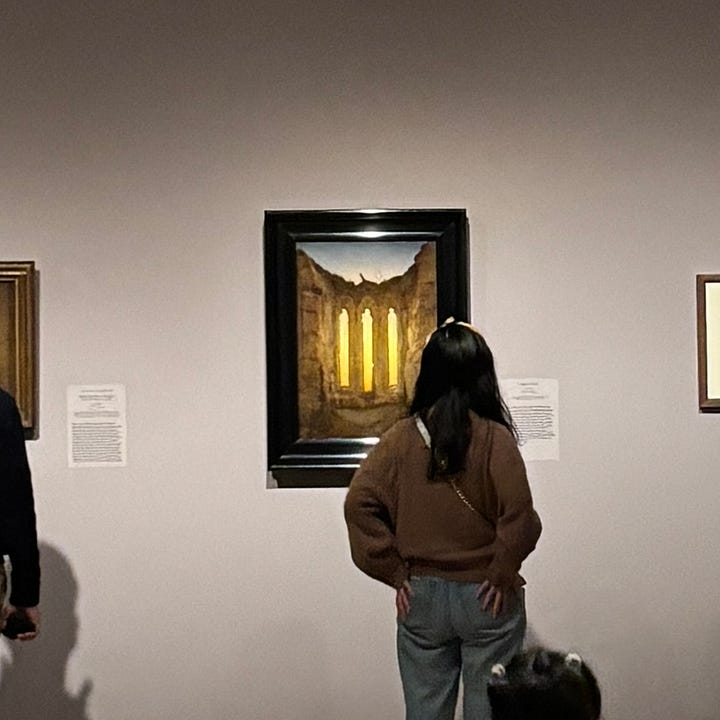
Thanks for reading! Check out my Instagram at @culture_dumper, where I post daily updates on my academic work, life, and current exhibitions in London. I am also active on TikTok.





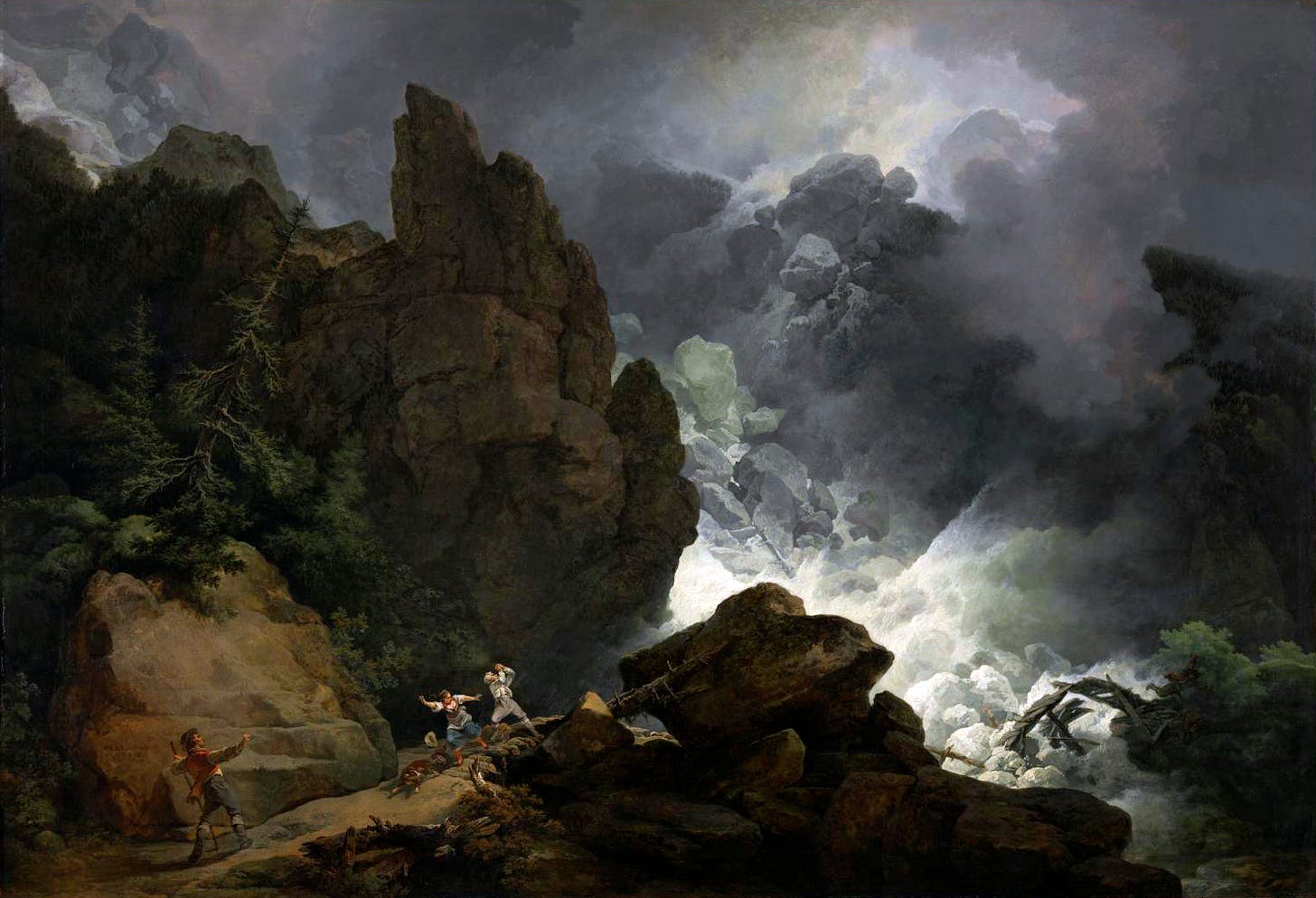


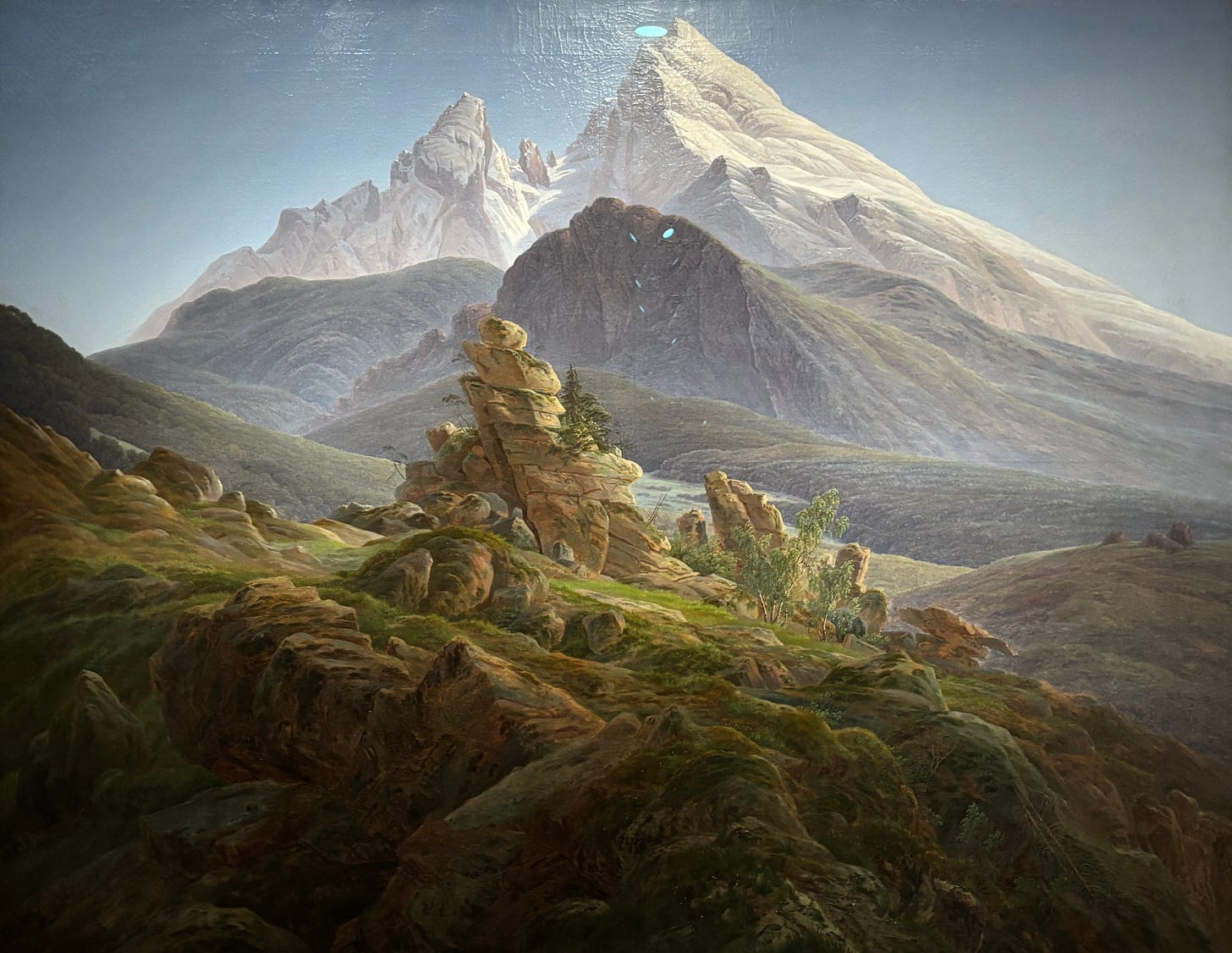

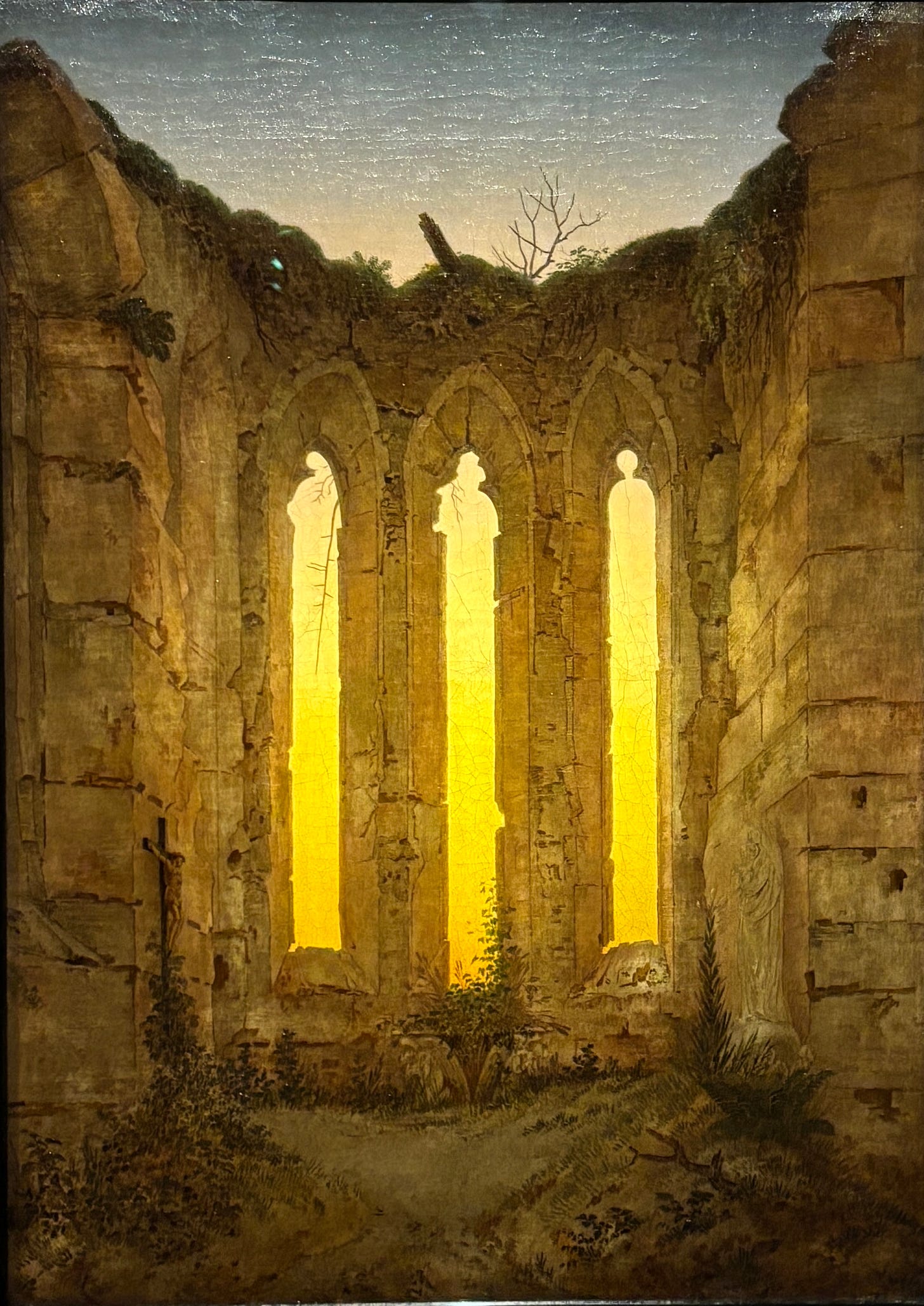

In his book 'Mountains of the Mind', Robert MacFarlane talks about our changing attitudes to mountains over the centuries, and how they went from eyesores to an example of sublime beauty. They used to be considered ghastly, wretched monstrosities and people couldn't fathom how anyone could see beauty in them. There's that lovely Thomas Hobbes poem: 'Behind a ruin’d mountain does appear/Swelling into two parts, which turgent are/As when we bend our bodies to the ground,/The buttocks amply sticking out are found.'
There's a great book called 'The Accidental Masterpiece: On the Art of Life and Vice Versa' (Michael Kimmelman) and he has this passage: "In fact, our modern attitude toward mountains – to what we consider their natural beauty – is a matter of conditioned learning, inherited through literature and theology, which has evolved during the last few centuries to encompass a notion of the sublime in nature: we have been trained what to see and how to feel."
I love that idea of being trained what to see and how to feel and obviously your friend Friedrich had a big part in that.
Thank you for this enlightening article. As a literary scholar, I am familiar with the notion of the sublime, but I don’t know as much about painting, particularly Friedrich’s work. I specialize in American writers, including Poe. I have to think that the notion of the sublime inspired the conclusion of his only complete novel, The Narrative of Arthur Gordon Pym.